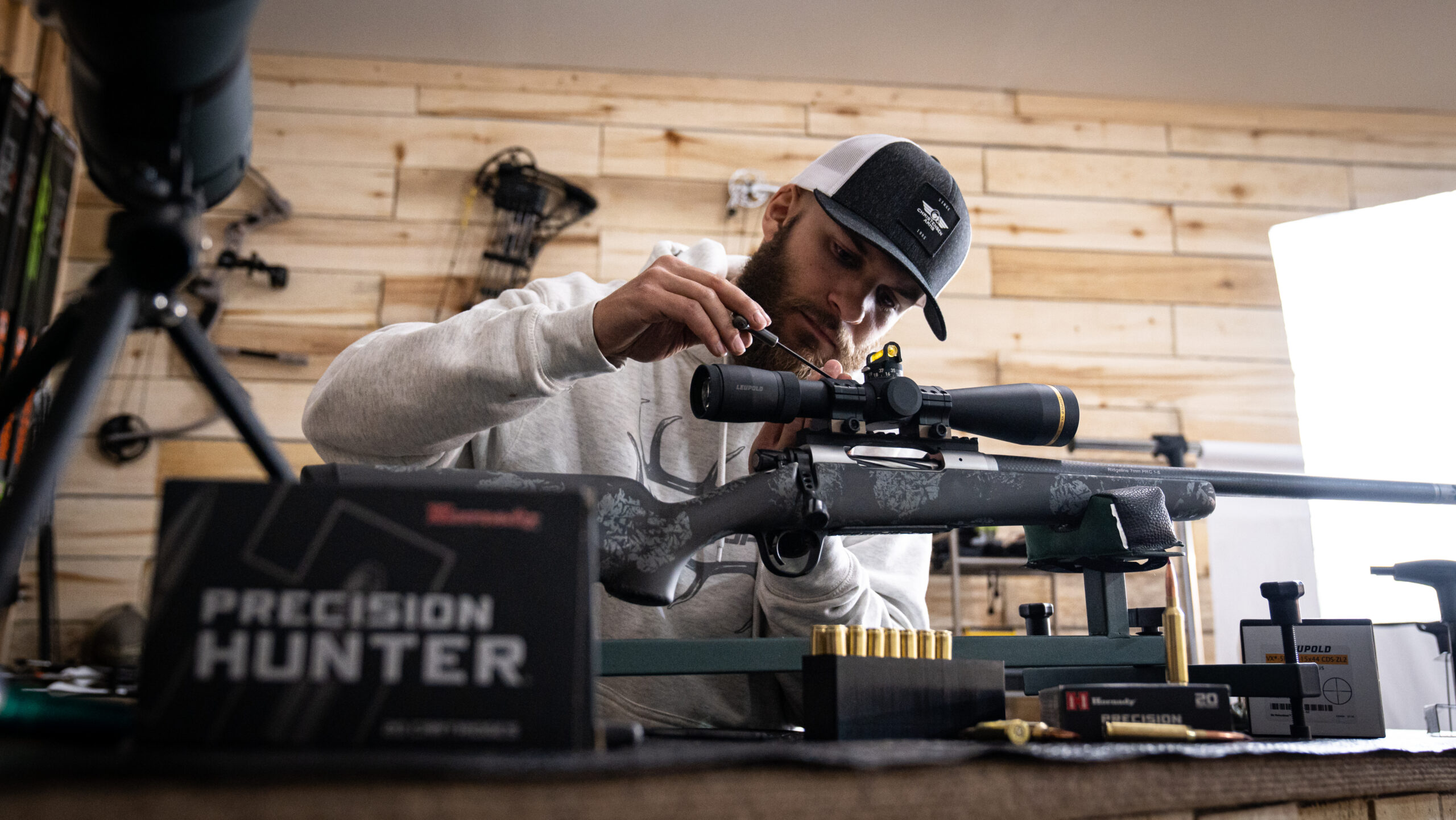How to Sight-In a Hunting Rifle: A Step-by-Step Guide for Accuracy
At Christensen Arms, we believe discipline in the basics drives results. When you are hunting, your shooting system is the basis for success or failure. Whether you’re preparing for your first hunt or refining your skills, this guide will walk you through the essential steps to guarantee your rifle is set-up to perform.
A proper sight-in of your hunting rifle ensures your point of aim matches your point of impact—so when you take that shot, you are confident in your rifle, gear, and skill.
Why You Need to Sight-In a Hunting Rifle
A premium rifle is only as effective when used correctly. Even with cutting-edge materials and engineering, a rifle that isn’t zeroed becomes a liability in the field. Learning how to sight-in a hunting rifle aligns your optic or iron sights with the bullet’s trajectory, ensuring your shots land exactly where you aim.
Whether you’re hunting elk in rugged terrain or whitetail in open fields, a properly sighted rifle gives you the confidence to make ethical, effective shots.
Step-by-Step Guide to Sighting-In
1. Gather the Right Gear
Start by assembling the essentials:
- Your hunting rifle, such as a Christensen Arms Evoke or Ridgeline FFT
- The exact ammunition you’ll use in the field
- A stable rifle rest or sandbags
- Targets with a defined bullseye
- A tool for your scope’s adjustments
- Eye and ear protection
2. Set Up at the Range
Choose a safe, stable shooting location. Place your target at 25 yards—this shorter distance helps get your initial shots on paper. Set your rifle on a solid rest and maintain a consistent shooting position. Stability is key to repeatable results.
3. Level Your Scope
Before firing any shots, ensure your scope is properly leveled. An unleveled scope can cause your point of impact to drift horizontally as you adjust for elevation. Use a scope leveling tool, or bubble level, to align the reticle with the rifle’s action while the rifle is securely rested. This ensures accurate adjustments and consistent performance, especially at extended distances.
4. Bore Sight Your Rifle
Before firing live rounds, bore sighting aligns your rifle’s barrel with the scope’s reticle. Here’s how:
-
Remove the bolt and look down the bore at the target.
-
Center the bullseye in the barrel.
-
Without moving the rifle, adjust your scope so the reticle also centers on the bullseye.
-
Double-check alignment and make minor adjustments if needed.
Bore sighting helps get your shots close to center, minimizing the need for large scope adjustments later.
5. Fire a Three-Shot Group
Load your rifle and fire three deliberate, controlled shots at the center of the target. Focus on fundamentals: controlled breathing, a smooth trigger press, and steady follow-through.
6. Analyze Your Group
Inspect your target and find the center of your shot group. It’s normal for the group to be off-center initially. For example, if your shots are 3 inches low and 2 inches right at 25 yards, you’ll adjust your scope accordingly.
7. Adjust the Scope
Use your scope’s turrets to correct point of impact:
- The elevation turret adjusts up/down.
- The windage turret adjusts left/right.
Most scopes adjust in ¼ MOA per click, or ¼ inch at 100 yards. At 25 yards, each click equals 1/16 inch. For a group 2 inches right at 25 yards, adjust left 32 clicks to center.
8. Fire Another Group
After adjustments, fire another three-shot group. Repeat the process—shoot, measure, adjust—until your group is tight and centered on the target.
9. Move to 100 Yards
Once you’re dialed in at 25 yards, reposition your target to 100 yards. This is the standard zero distance for most hunting rifles. Repeat the same steps: fire a group, measure, and adjust as needed.
10. Confirm and Lock In Your Zero
When your shots consistently land where you aim, your rifle is sighted in. Fire additional groups to confirm consistency. If you plan to hunt at varying distances, consider checking your point of impact at those distances as well.
11. Record Your Data
Document your zero distance, scope settings, ammunition used, and environmental conditions like wind and temperature. This record is invaluable for future reference and re-zeroing.
Pro Tips for Sighting-In a Hunting Rifle
-
Always sight in using the exact ammunition you’ll hunt with. Different bullet weights or loads can shift point of impact.
-
Keep your barrel clean and free of fouling for consistent performance.
-
Develop a routine—confidence in your rifle starts with familiarity.
For more tips on choosing your first hunting rifle, read our guide on The Best Entry-Level Hunting Rifle.
The Christensen Arms Standard
A rifle is only as good as its setup—and your confidence in it. At Christensen Arms, we build rifles for those who demand precision without compromise. Knowing how to sight-in a hunting rifle is part of that standard. Sight in with precision. Hunt with certainty.



